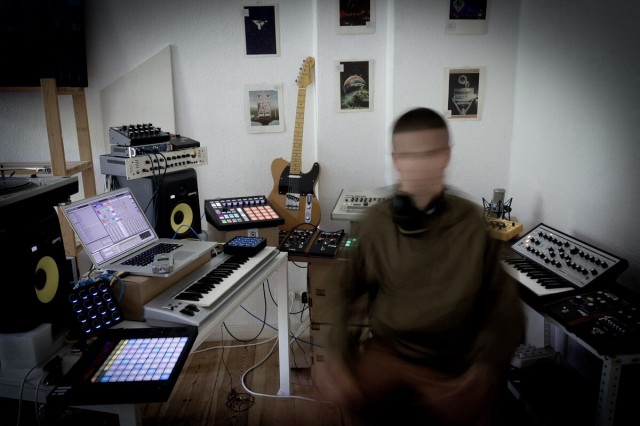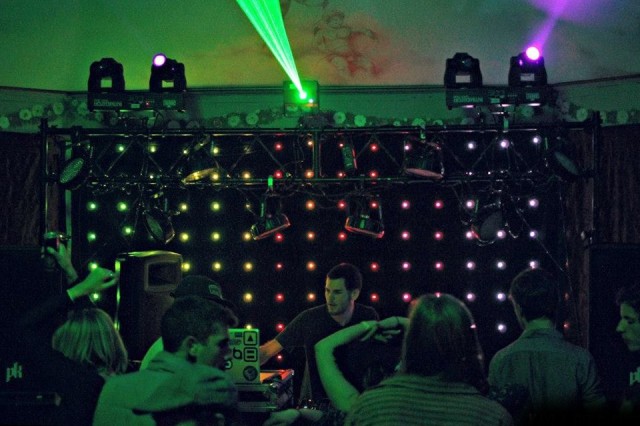“Producer”: in electronic music, this used to mean some person who makes tracks. Today, some special electronic musicians go way beyond that role. They’re combining skills partly because it means diversifying income, but also out of a real love for doing a variety of stuff. They’re holed up in the studio making music, sure – but they’re also finding collaborative ways of doing that, often online, and sharing skills and sounds as they develop them. It’s a more open, connected approach to electronic musical practice.
And Mad Zach is a great example. He’s a producer and DJ, but he’s also a journalist, he’s devising new ways of performing with controllers, he’s sharing sounds and techniques with others, and he’s teaching.
I’m biased – I mix a lot of these things myself, and I’ve naturally gotten to be friends with other people who are doing the same. (I’ll leave it to you to decide whether this is a Renaissance Man / Renaissance Women phenomenon, or if we just can’t say no to things! But it can be fun!)
So, I was really eager to get to talk to Zach about what he’s up to. CDM got that opportunity when we Beatport approached us to provide some input on a video tutorial accompanying a sound pack Zach was assembling. Zach and I talked a bit about what to share, and in the end I encouraged him to talk about his approach to playing live and making more soulful grooves. This wasn’t advertorial – on the contrary, since it was a voluntary collaboration, I used the opportunity for my own ulterior motives of getting to learn more about how Zach works. I’m really happy with the result, which you can see below.
But I also wanted to talk to Zach more about how he wound up making this sound pack, and how he manages these different threads of his career and musical activity. With so many in our community pursuing multi-track music making in this way, that technique may be just as important as what he does with the software.
CDM: First, can you tell us a little bit about yourself? Some people know you from contributions to DJ TechTools and so on, but I know you’re also out there producing and DJing. Speaking as a person myself who wears a lot of hats, what are the elements of your musical practice, and how do you hold them together?
Mad Zach: Well, I’m originally from the San Francisco Bay Area, but living in Berlin now. Just got back to my studio from a tour in the States, which was super fun! I try to focus my musical practice on my day-to-day experience, so pretty much making beats all the time, with some breaks to go to the park or out to a club. I’m really obsessed with making my beats live, and have been fortunate enough to play with a lot of analog hardware. So that plays a pretty big role in my workflow.
I also fell into this YouTube thing, where I do educational stuff, performances for companies like DJ TechTools, Native Instruments, Moog. That has a lot to do with acting, I think, and both my parents are teachers. The reasons I like it are for the humor and the positive response from helping people have fun. Sharing knowledge is cool because why not stoke the fire and see what happens? Plus its a fun way to build more of a lifestyle around being in the studio, instead of putting all my time and effort into touring.
How did you go about assembling this project? Where did you start; how did it come together?
I started by immersing myself in the sound and vibe, going out to the clubs here in Berlin, record hunting, doing my homework. Once I’d decided on the ingredients I made a special trip back to the States to grab my Roland TR-909 drum machine. Bringing it back on the plane was pretty funny (I had to sit with it in my lap for the whole flight). I wanted to create something that would give people the power of analog tone, with the flexibility of Ableton. After engineering all kinds of sounds from the 909, Roland Juno 106, field recordings, Moogerfoogers, etc., I created a bunch of super pimped out drum racks and instrument racks. But I’d say when it really started to glue was when I figured out I could extract the grooves from the 909. Those things sound insane; it’s like patterns write themselves. The most complicated part was setting up all the macro controls, but totally worth the time because now working with it is so fast. You have everything you need right there.
Learn How to Get Your Drum Machine’s Soul Back with Mad Zach, Ableton Live
How are you playing out these days? What’s your live / DJ setup, and how do you make use of it?
For the more hip hop and bass stuff, I’ve been rocking Ableton with two DJ TechTools MIDI Fighter Spectra‘s and a DJTT Twister. I use one Spectra for clip launching, the other for finger drumming, then the Twister in the middle is for my mix and effects. I’ve also been toting around a Moogerfooger Cluster Flux – which I run my sound packs through (that thing sounds insane!). I’m also working on a live set more geared towards the 120bpm direction which will be focused on hardware.
One of the things that’s interesting to me about your approach is how collaborative it is. You’re producing in a lot of collaborations – and then you “crowd-sourced” an EP, too. What does it mean to you to open up your process in this way?
To me, collaboration is all about focusing on what you do best, and letting other people do what they do best. Its also really inspiring to release something like a sound pack or a collaborative song and see what people do with it. It’s like planting a seed. A lot of the collaborations I do are more idea sharing than in-person studio time, although I’ve had a few music making buddies throughout, like G Jones, Doshy, and my brother. The crowd-sourced EP is an experiment I’m doing with this new site Blend.io that lets you post Ableton projects. So I posted up some sketches to see what people did with them, then finished up the songs after integrating their ideas. It’s turned out really cool, and we’re having a vinyl release which I’m excited about.
Another element of that to me is the way you’re working with education – itself a kind of collaboration. You’re doing a whole lot with helping people with the craft of constructing music. Obviously, teaching is another way to support yourself as an artist — this is a long tradition of music making. But what’s your motivation? And does teaching impact the way you yourself make things?
The teaching and educational thing is something I fell into as sort of a combination of my interests. I like to enable people to have fun; to me that’s what its all about. It’s also a great way to spread ideas, like creating this special 16-grid sound pack paradigm and fostering all these finger drummers I’ve helped inspire. I want to see musicianship re-integrate with music production on a large scale. I think if we can make playing hardware and controllerism this generation’s Stratocaster [electric guitar], the result will be an explosion of creativity in music (not that there isn’t already incredible stuff out there). As a music lover, that sounds pretty good.
For those people just getting to know your music, any suggestions on what to listen to? How would you describe the idiom you work in?
Most of the stuff I’ve released combines hip hop-style beats with analog electronic sound design and sampling. My workflow is based on doing sound design sessions in Ableton and with my gear, and then playing my beats in live on MIDI controllers.
I also spend a lot of time jamming out on my hardware, which includes the 909, Moog Sub Phatty, Moogerfoogers, Elektron Analog Rytm [drum machine].
Deep House – what’s your relationship to this genre? It seems different from your normal idiom. I know not everyone reading this will even like the style, but what can you say about it for those reading this who might not know it or appreciate it so much?
I suppose my normal musical idiom is probably perceived a bit differently than it actually is. While I’ve released more bass-focused tunes, I actually spend more than half my time making house and techno. But to me, it’s not really about deep house, that’s more of a buzz word to grab attention. I wanted to create something that a lot of people would have a use for. So its really about 120 bpm and amazing tone, providing quality building blocks.
As a style, I’d say house is about the club environment and the way people move to it. And I think in parts of the States people miss that because there just aren’t the clubs. But the truth is that the template is applicable for all kinds of genres, you could make house, techno, or you could even shift the bpm to 140 and make trap, or turn off tempo and just do ambient, there are no rules! With raw tone like this, there needs no explanation. In the demos I made for the pack, I followed the deep house paradigm more for some than others. If you check out number 4, you can listen to more of the Mad Zach feel coming out through the pack.
Thanks, Zach! I know this has been an inspiration to me as I work this week; I hope it’s the same for others. For one thing, I have to see if I can mangle that Deep House soundpack into some weird ambient track, after all. Sounds like a challenge.

